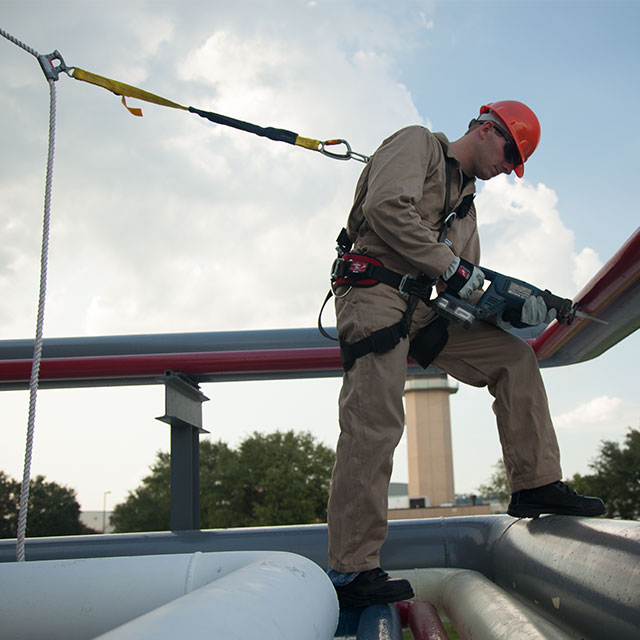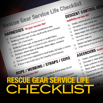 In January 2004, an explosion at the West Pharmaceutical Company in Kingston, NC killed 6 workers and injured 34 others. Two firefighters were injured during the response to the incident. One month later, an explosion and fire occurred at the CTA Acoustics manufacturing facility in Corbin, KY, killing 7 workers. In February 2008, an explosion at the Imperial Sugar Company facility in Wentworth, GA, killed 13 workers and injured 42 others. Three very different types of facilities with very different products, but with one thing in common—dust!
In January 2004, an explosion at the West Pharmaceutical Company in Kingston, NC killed 6 workers and injured 34 others. Two firefighters were injured during the response to the incident. One month later, an explosion and fire occurred at the CTA Acoustics manufacturing facility in Corbin, KY, killing 7 workers. In February 2008, an explosion at the Imperial Sugar Company facility in Wentworth, GA, killed 13 workers and injured 42 others. Three very different types of facilities with very different products, but with one thing in common—dust!
The Chemical Safety Board reported that there were 281 explosions of combustible dust in the United States between 1980 and 2005. These explosions resulted in 199 deaths and 718 injuries. And these are just the actual explosions. There are countless more combustible dust environments just waiting for the right (or wrong) conditions to align to become the next fatal explosion. The fact is that with the exception of silicon or sand, every kind of dust is potentially combustible to some degree.
Combustible dusts are measured on a “deflagration index,” (see box) which measures the relative explosion severity compared to other dusts. They range from such seemingly innocuous items such as dust from powdered milk and egg whites that can create “weak explosions,” to dusts from items such as magnesium and aluminum that can result in “very strong explosions.” But I think we can all agree that no explosion, even a “weak” explosion, is a good explosion—especially if it occurs during rescue operations.
 As rescuers, you should already be familiar with the “fire triangle.” To understand the danger of combustible dusts, you should also be familiar with the “dust explosion pentagon.” The dust explosion pentagon consists of the following:
As rescuers, you should already be familiar with the “fire triangle.” To understand the danger of combustible dusts, you should also be familiar with the “dust explosion pentagon.” The dust explosion pentagon consists of the following:
- Combustible Dust (Fuel)
- Ignition Source
- Oxygen
- Dispersion of dust (suspension)
- Containment of the dust in a confined or semi-confined area (Enclosures/Building/Confined Space)
Rescuers should be on the lookout for any appreciable accumulation of dust when sizing up a rescue situation. Keep in mind that your atmospheric monitor containing a sensor for combustible gases is not effective for detecting a hazard from combustible dust.
Always remain aware that in a suspended state, dust becomes explosive. Dust explosions occur when combustible dust is present, forms a dust cloud in an enclosed environment, and is exposed to oxygen and an ignition source. The explosion occurs as a result of the rapid burning of the dust cloud, which creates a rapid pressure rise in the enclosed area or confined space.
A dust pile that may burn while an ignition source is being applied, then go out immediately or shortly after the ignition source is removed, can become lethally explosive when scattered and suspended in the air.
Always consider the potential for combustible dust in any rescue situation, particularly when ventilation of an enclosure, building, or confined space is considered. A “safe” area can become a ticking bomb if ventilation results in the suspension of otherwise stable dust accumulations.
This article was written by Robert Aguiluz, who is currently an Administrative Law Judge for the State of Louisiana. He is also an attorney who specializes in Occupational Safety and Health Law, and regulatory and compliance issues. He is a former Certified Safety Professional and Roco Rescue Instructor with over twenty years’ experience in both industrial and municipal emergency response and rescue.
Combustible Dust Considerations for Emergency Responders:
1. Know your response area and the types of industry that may have the potential for combustible dust. If you are performing standby rescue duties, meet with the SH&E management team to learn about any combustible dust hazards at their facility.
2. Become familiar with the “deflagration index” for various types of materials. See sample Chart below.
Examples of Kst Values for Different Types of Dust

3. Consider the effect of ventilating a space that has accumulations of combustible dust.
• Will you cause the dust to become suspended?
• Will the suspended moving dust create a static charge/discharge and become a source of ignition?
• Can your ventilation equipment become a source of ignition?
4. Is there information to review on the SDS (Safety Data Sheet) regarding the material’s potential to become combustible dust?
HELPFUL LINKS:
OSHA Quick Card: Prevent Dust Explosions
“Firefighting Precautions at Facilities with Combustible Dust”
“Hazardous Communication Guidance for Combustible Dust”
“Combustible Dust in Industry: Preventing and Mitigating the Effects of Fire and Explosions”
“NFPA 654: Standard for the Prevention of Fire and Dust Explosions”

 OSHA's
OSHA's  In a recent article in ASSE’s Professional Safety magazine, we found some very important points to consider for rescuers. Whether you are preparing for stand-by rescue operations, getting ready to enter an “abandoned in place” vessel, or just found the “perfect” retired vessel to use for your upcoming rescue training…proceed with caution!
In a recent article in ASSE’s Professional Safety magazine, we found some very important points to consider for rescuers. Whether you are preparing for stand-by rescue operations, getting ready to enter an “abandoned in place” vessel, or just found the “perfect” retired vessel to use for your upcoming rescue training…proceed with caution! time to retire the equipment.
time to retire the equipment.  The following article was featured in the June 2014 issue of ISHN, and authored by Roco Chief Instructor Pat Furr.
The following article was featured in the June 2014 issue of ISHN, and authored by Roco Chief Instructor Pat Furr.
 Time to Train
Time to Train Recently, we noticed a story in a leading safety and health magazine that questions the “two-piece, pass-through buckle” that is commonly used on many harnesses. The author, in fact, referred to it as a design flaw. However, we consider it more a matter of improper use than a design flaw. While he does identify some potential user failures, we feel his terming is not quite accurate. Here’s why...
Recently, we noticed a story in a leading safety and health magazine that questions the “two-piece, pass-through buckle” that is commonly used on many harnesses. The author, in fact, referred to it as a design flaw. However, we consider it more a matter of improper use than a design flaw. While he does identify some potential user failures, we feel his terming is not quite accurate. Here’s why... 



